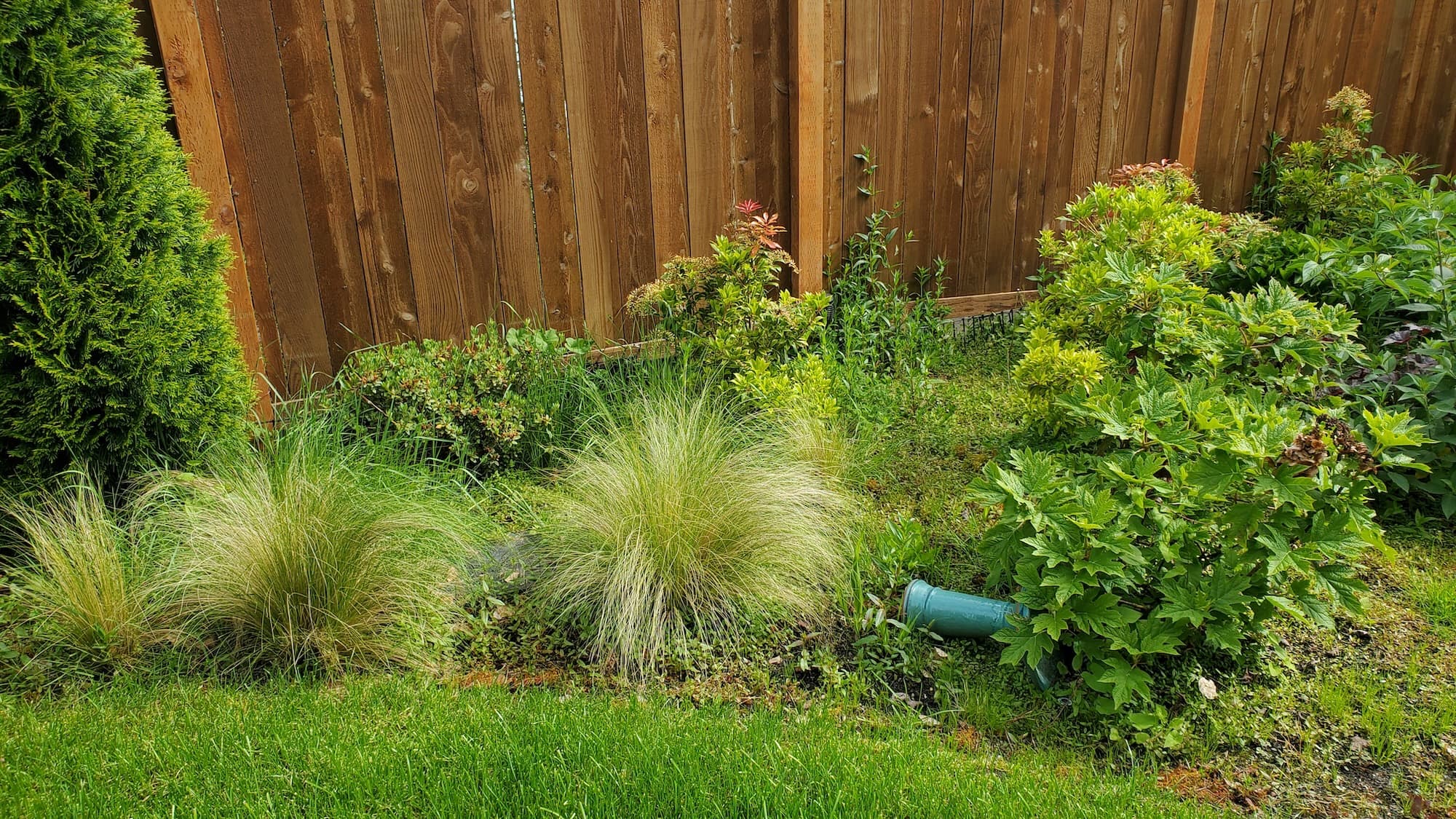West Seattle Apply Pre-emergent Under Mulch
Homeowner’s Issue
West Seattle yards get a lot of attention from weather and plants alike. Winters are long and wet, summers are short and often dry; that pattern plus clay-ish pockets and shallow topsoil on slopes makes weed pressure relentless from late winter through fall. North- and west-facing beds under big cedars and Douglas fir go shady and mossy; sun-exposed slopes by Alki or Admiral push quick germination of annual grasses and broadleaf seedlings after every warm, wet spell. Compacted turf edges, runoff from rainy streets, and frequent foot traffic along Fauntleroy and Morgan Junction create disturbance that brings weed seed to the surface.
Homeowners here want tidy curb appeal without constant work and without spraying poisons. HOAs around some condos and East Admiral properties expect neat, low-maintenance beds. The two real local problems are drainage on sloped parcels and repeated seed-set from adjacent greenbelts and parkways — Lincoln Park and bluff areas seed everything downhill. That means a successful pre-emergent plan in West Seattle favors physical barriers, organic seed-blockers timed before germination, good mulch depth, and improving soil structure so plants outcompete weeds. Done right, this saves time, reduces erosion on slopes, and keeps your street-facing bed looking intentional through the rainy months.
Our Quality Service
We do practical, sustainable weed prevention under mulch — no synthetic herbicides. We hand-clear existing seedlings, rake and amend the topsoil where needed, and apply an organic pre-emergent (e.g., corn gluten meal) or physical barrier depending on the bed. We lay mulch to spec (2–3” generally; 3–4” on steep, exposed slopes), top-dress with compost where soil is thin, and spot-plant with low-maintenance natives on request.
Tools and methods: hand tools, magnet rakes, screened compost, mulch blower for larger jobs, biodegradable erosion control on slopes. Typical timeline: 2–6 hours for a single-city lot bed; larger projects scheduled within 1–2 weeks. Seasonal windows: late winter/early spring before germination and a fall tune-up after seed-set. We follow Seattle water advisories and avoid approaches that require chemical runoff; water usage is minimal and timed for best establishment.
Benefits: cleaner beds, reduced repeat weeding, improved soil health, stabilized slopes, and a neat street-facing appearance that respects local parks and neighborhoods.
What’s Included
- Pre-service inspection and photo estimate.
- Manual removal of visible weeds and debris.
- Light soil prep and top-dressing with screened compost as needed.
- Application of an organic pre-emergent where appropriate.
- Mulch installation to recommended depth; clean edges and tidy finish.
- Haul-away: green‑bin or curb-side composting option.
Options / Upgrades:
- Weed fabric under decorative gravel (where requested).
- Extra thick mulch for slope stabilization (3–4”).
- Coir logs or biodegradable wattles for erosion-prone banks.
- Native plantings (low-maintenance, pollinator-friendly).
- Recurrent maintenance plans (quarterly/bi-monthly).
Before & After / Expectations
Be realistic: we’ll leave some mess during the workday — soil, mulch dust, and a small pile of green waste that we’ll haul or leave for your green bin per your preference. Expect light noise from hand tools or a mulch blower on bigger jobs. Access: we need safe curb or driveway parking and a clear path for wheelbarrows; tight alleys may add time.
Timing: best to schedule a pre-emergent application just before the spring germination window (late Feb–early Mar) and again as a fall prep. After mulching, avoid heavy watering for 24–48 hours unless planting is involved. In West Seattle, watch for moss in shaded beds and ivy on slopes — these need repeat attention and sometimes full removal of roots rather than surface treatments. If you live near Lincoln Park or beachfront Alki, expect more wind-blown seed and plan for a tighter maintenance cadence.
Care tips:
- Keep mulch 2–3” deep; pull back slightly from trunks/stems.
- Hand-pull seedlings after heavy rains when soil is loose.
- Avoid piling mulch against foundations or tree collars.
- Replenish mulch every 12–18 months depending on exposure.
FAQs
Q: Will you use chemical herbicides?
A: No. We use organic, physical, and cultural methods only — corn gluten meal, mulches, fabric, and hand removal.
Q: When is the best time to apply?
A: Late winter/early spring before soil temperatures rise and seeds germinate, and a fall check after seed-set. We’ll time visits to local weather patterns.
Q: How long until I see results?
A: You’ll see fewer seedlings that season; full reduction of the seed bank takes a year or two with consistent maintenance.
Q: Do you handle steep slopes and drainage?
A: Yes. We install erosion controls, adjust mulch depth, and recommend simple drainage fixes; major civil drainage work will be quoted separately.
Q: Can you compost removed weeds?
A: Yes — haul-away to green bin or take to compost site per your preference. No landfill hauling unless requested.
Call to Action
If you live in West Seattle and want a low-chem, practical plan that actually reduces work, book a free estimate. We schedule quickly, give clear upfront pricing, and tailor work to West Seattle microclimates from Alki flats to Admiral slopes.
Email: neatandtidyseattle@gmail.com
Phone: 206-538-9344
We’re the local crew that keeps West Seattle yards honest and low‑maintenance.










